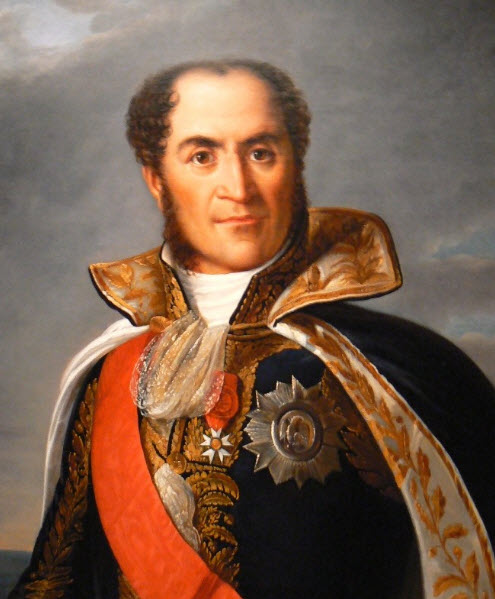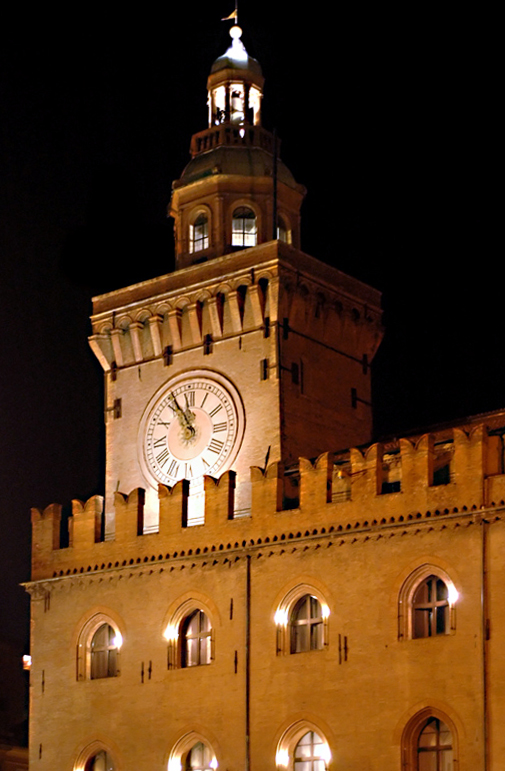|
Persiceto
San Giovanni in Persiceto (from 1912 to 1927: ''Persiceto''; Bolognese dialect, Western Bolognese: ) is a town and ''comune'' in the Metropolitan City of Bologna, northern Italy. Located in the northern part of the Metropolitan City, bordering with the Province of Modena, provinces of Modena and Province of Ferrara, Ferrara, San Giovanni in Persiceto is surrounded by the municipalities of Anzola dell'Emilia, Castelfranco Emilia, Castello d'Argile, Cento, Crevalcore, Sala Bolognese and Sant'Agata Bolognese. History Middle Ages The most ancestral records claim the town was first populated by Gauls, but later occupied by the Ancient Rome, Romans. The area appears to have been depopulated after the fall of the Western Roman Empire. The flooded plain remained uncultivated until the rule of the Exarchate of Ravenna, when lands were drained again. The Byzantines also built a defensive line in the territory against the Lombards, but c. 727, under King Liutprand, King of the Lombards, L ... [...More Info...] [...Related Items...] OR: [Wikipedia] [Google] [Baidu] |
Duchy Of Persiceto
The Duchy of Persiceta (or Persiceto) in the Kingdom of the Lombards was created on territory taken from the Byzantine Empire by King Liutprand, King of the Lombards, Liutprand in 728. It comprised two ''pagus, pagi'' ("counties"): Monteveglio south of the Via Aemilia and San Giovanni in Persiceto, Persiceto to the north. The ''pagus'' of Persiceto and the duchy as a whole were named for its chief fortress, the ''Castrum Persiceta''. In this region in 752, King Aistulf granted his brother-in-law Anselm, Duke of Friuli, Anselm land on which to build a monastery, Nonantola Abbey, Nonantola. The dukes of Persiceta were early patrons of Nonantola, and along with the kings gave it vast tracts of land amounting to about 400 square kilometres. Persiceta and Nonantola formed a common bulwark against Exarchate of Ravenna, Byzantine Italy, which Liutprand made no further attempt to occupy. The earliest recorded duke was a Friulian, Ursus I, around 750. His son John was duke between 772 and 776 ... [...More Info...] [...Related Items...] OR: [Wikipedia] [Google] [Baidu] |
Samoggia
The Samoggia is a river in the Emilia-Romagna region of Italy. The source of the river is in the province of Modena near Zocca. The river flows northeast into the Metropolitan City of Bologna and flows near Bazzano, Crespellano, Piumazzo, Anzola dell'Emilia and San Giovanni in Persiceto before entering the Reno Reno ( ) is a city in the northwest section of the U.S. state of Nevada, along the Nevada-California border, about north from Lake Tahoe, known as "The Biggest Little City in the World". Known for its casino and tourism industry, Reno is the c ... east of Decima. The Samoggia has a tributary called the Lavino that flows into it near San Giovanni in Persiceto. References Rivers of the Province of Modena Rivers of the Province of Bologna Rivers of Italy {{Italy-river-stub ... [...More Info...] [...Related Items...] OR: [Wikipedia] [Google] [Baidu] |
Castello D'Argile
Castello d'Argile ( Northern Bolognese: ) is a ''comune'' (municipality) in the Metropolitan City of Bologna in the Italian region Emilia-Romagna, located about north of Bologna. Castello d'Argile borders the following municipalities: Argelato, Cento, Pieve di Cento, Sala Bolognese, San Giorgio di Piano, San Giovanni in Persiceto, San Pietro in Casale San Pietro in Casale ( Bolognese: ) is a municipality in the Metropolitan City of Bologna, in Emilia-Romagna, Italy. It is situated north from Bologna, and southwest from Ferrara. San Pietro is on the main rail line from Bologna to Padua and Ve .... References External links Official website Cities and towns in Emilia-Romagna {{EmiliaRomagna-geo-stub ... [...More Info...] [...Related Items...] OR: [Wikipedia] [Google] [Baidu] |
Emilia-Romagna
egl, Emigliàn (man) egl, Emiglièna (woman) rgn, Rumagnòl (man) rgn, Rumagnòla (woman) it, Emiliano (man) it, Emiliana (woman) or it, Romagnolo (man) it, Romagnola (woman) , population_note = , population_blank1_title = , population_blank1 = , demographics_type1 = , demographics1_footnotes = , demographics1_title1 = , demographics1_info1 = , demographics1_title2 = , demographics1_info2 = , demographics1_title3 = , demographics1_info3 = , timezone1 = CET , utc_offset1 = +1 , timezone1_DST = CEST , utc_offset1_DST = +2 , postal_code_type = , postal_code = , area_code_type = ISO 3166 code , area_code = IT-45 , blank_name_sec1 = GDP (nominal) , blank_info_se ... [...More Info...] [...Related Items...] OR: [Wikipedia] [Google] [Baidu] |
Exarchate Of Ravenna
The Exarchate of Ravenna ( la, Exarchatus Ravennatis; el, Εξαρχάτο της Ραβέννας) or of Italy was a lordship of the Eastern Roman Empire (Byzantine Empire) in Italy, from 584 to 751, when the last exarch was put to death by the Lombards. It was one of two exarchates established following the western reconquests under Emperor Justinian to more effectively administer the territories, along with the Exarchate of Africa. Introduction Ravenna became the capital of the Western Roman Empire in 402 under Honorius due to its fine harbour with access to the Adriatic and its ideal defensive location amidst impassable marshes. The city remained the capital of the Empire until 476, when it became the capital of Odoacer, and then of the Ostrogoths under Theodoric the Great. It remained the capital of the Ostrogothic Kingdom but, in 540 during the Gothic War (535–554), Ravenna was occupied by the Byzantine general Belisarius. After this reconquest it became the seat of the ... [...More Info...] [...Related Items...] OR: [Wikipedia] [Google] [Baidu] |
Gregory XVI
Pope Gregory XVI ( la, Gregorius XVI; it, Gregorio XVI; born Bartolomeo Alberto Cappellari; 18 September 1765 – 1 June 1846) was head of the Catholic Church and ruler of the Papal States from 2 February 1831 to his death in 1 June 1846. He had adopted the name Mauro upon entering the religious order of the Camaldolese. Strongly conservative and traditionalist, he opposed democratic and modernising reforms in the Papal States and throughout Europe, seeing them as fronts for revolutionary leftism. Against these trends, Gregory XVI sought to strengthen the religious and political authority of the papacy (see ultramontanism). In the encyclical ''Mirari vos'', he pronounced it "false and absurd, or rather mad, that we must secure and guarantee to each one liberty of conscience." He encouraged missionary activity abroad and condemned the slave trade. He is the most recent pope to take the pontifical name " Gregory", and the most recent pope who was not a bishop when elected. He ... [...More Info...] [...Related Items...] OR: [Wikipedia] [Google] [Baidu] |
Napoleon
Napoleon Bonaparte ; it, Napoleone Bonaparte, ; co, Napulione Buonaparte. (born Napoleone Buonaparte; 15 August 1769 – 5 May 1821), later known by his regnal name Napoleon I, was a French military commander and political leader who rose to prominence during the French Revolution and led successful campaigns during the Revolutionary Wars. He was the ''de facto'' leader of the French Republic as First Consul from 1799 to 1804, then Emperor of the French from 1804 until 1814 and again in 1815. Napoleon's political and cultural legacy endures to this day, as a highly celebrated and controversial leader. He initiated many liberal reforms that have persisted in society, and is considered one of the greatest military commanders in history. His wars and campaigns are studied by militaries all over the world. Between three and six million civilians and soldiers perished in what became known as the Napoleonic Wars. Napoleon was born on the island of Corsica, not long af ... [...More Info...] [...Related Items...] OR: [Wikipedia] [Google] [Baidu] |
Cisalpine Republic
The Cisalpine Republic ( it, Repubblica Cisalpina) was a sister republic of France in Northern Italy that existed from 1797 to 1799, with a second version until 1802. Creation After the Battle of Lodi in May 1796, Napoleon Bonaparte organized two states: one to the south of the Po, the Cispadane Republic, and one to the north, the Transpadane Republic. On 19 May 1797, Napoleon transferred the territories of the former Duchy of Modena to Transpadania and, on 12 Messidor (29 June), he decreed the birth of the Cisalpine Republic, creating a Directory for the republic and appointing its ministers. France published the constitution of the new republic on 20 Messidor (7 July), establishing the division of the territory into eleven departments: Adda ( Lodi), Alpi Apuane (Massa), Crostolo ( Reggio), Lario (Como), Montagna (Lecco), Olona (Milan), Panaro (Modena), Po (Cremona), Serio (Bergamo), Ticino (Pavia), and Verbano (Varese). The rest of Cispadania was merged into the Cisalpine Re ... [...More Info...] [...Related Items...] OR: [Wikipedia] [Google] [Baidu] |
Venice
Venice ( ; it, Venezia ; vec, Venesia or ) is a city in northeastern Italy and the capital of the Veneto Regions of Italy, region. It is built on a group of 118 small islands that are separated by canals and linked by over 400 bridges. The islands are in the shallow Venetian Lagoon, an enclosed bay lying between the mouths of the Po River, Po and the Piave River, Piave rivers (more exactly between the Brenta (river), Brenta and the Sile (river), Sile). In 2020, around 258,685 people resided in greater Venice or the ''Comune di Venezia'', of whom around 55,000 live in the historical island city of Venice (''centro storico'') and the rest on the mainland (''terraferma''). Together with the cities of Padua, Italy, Padua and Treviso, Italy, Treviso, Venice is included in the Padua-Treviso-Venice Metropolitan Area (PATREVE), which is considered a statistical metropolitan area, with a total population of 2.6 million. The name is derived from the ancient Adri ... [...More Info...] [...Related Items...] OR: [Wikipedia] [Google] [Baidu] |
Gaspare Nadi
Gaspare Nadi or Guasparo di Nadi (2 November 1418 – 9 January 1504) was an Italian builder famous for his diary (''diario''). He was mistaken by later historians for an architect. He built, but did not design, the library of the Basilica of San Domenico.Quaquarelli (2012). Nadi was born in a house on the Via dei Pelacani (now Via G. Petroni) in the parish of San Vitale in Bologna. His father, Filippo di Domenico, was a tanner who died in 1427. That same year his mother, Chiara, remarried to Giacomo Senzabarba, a shoemaker. At the age of fifteen Nadi moved to Faenza in the following of the jurist Graziolo Accarisi, but two years later he returned to Bologna. Senzabarba refused to maintain him there and so within months he had moved into the house of Gaspare di Guido, where he was taught to read and write under a private instructor. In 1436 he began learning to work with wool and then apprenticed with a barber, but since his mother could not afford his training, he moved into mas ... [...More Info...] [...Related Items...] OR: [Wikipedia] [Google] [Baidu] |
Giovanni II Bentivoglio
Giovanni II Bentivoglio (12 February 144315 February 1508) was an Italian nobleman who ruled as tyrant of Bologna from 1463 until 1506. He had no formal position, but held power as the city's "first citizen." The Bentivoglio family ruled over Bologna from 1443, and repeatedly attempted to consolidate their hold of the Signoria of the city. Background Born in Bologna, Giovanni II was the son of Annibale I Bentivoglio, then chief magistrate of the commune, and Donnina Visconti. He was a child when his father was murdered by his rival Battista Canneschi in June 1445. Annibale I was succeeded in Bologna by Sante I, of uncertain paternity and origin, but alleged to be a son of Ercole Bentivoglio, a cousin of Annibale I. Originally an apprentice of the wool guild of Florence, Sante ruled as ''signore'' of Bologna from 1443. When Sante died in 1463, Giovanni II Bentivoglio successfully made himself lord of the commune, although it was nominally a fief of the church under a papal lega ... [...More Info...] [...Related Items...] OR: [Wikipedia] [Google] [Baidu] |





.jpg)

